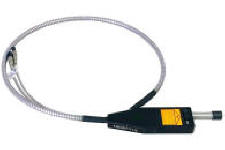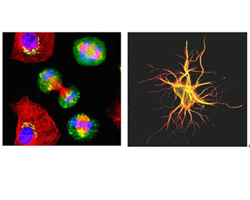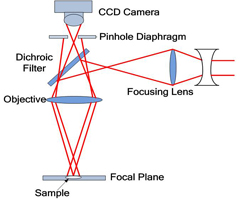The old adage that "money can make the ghosts grind" may still apply in today's real world, but in the virtual world, "identity" is the king.
Admittedly, it still costs money to buy goods and services on Amazon. However, it is undeniable that secure digital identities made up of user names, passwords, and other evolving authentication methods have become "admission tickets" to the Internet world.
In fact, Dave Birch, an analyst at Consult Hyperion, stated in his book Identity - New Currency that identity and money will one day replace each other and create a new type of currency. This raises the question: As the trusted guardian of money for centuries, is the bank still the guardian of future currencies?
When talking about digital identities, people often encounter many thorny problems and challenges. For example, what is a digital identity? Who can have a digital identity? Who is responsible for maintaining digital identities? Who should be liable if he is stolen or misidentified? How to ensure the security of digital identities without affecting the user experience?
In an era of ubiquitous networks, mobile computing and the Internet of Things, it is no longer feasible and safer for users to repeatedly enter passwords or answer security questions each time they need services.
The increasing use of federated identities and open-banking initiatives promoted by the European Union's "Payment Services Directive II" (PSD2) and other regulations requires that banks use APIs to open accounts and payment information to dozens of fintech companies. In this context, how to deal with the above issues is imminent.
Identity is trust
Dave Birch and other industry experts with the same insight have made a completely new definition of identity. They think that identity is not only you and your name, but also your reputation - that is, social capital - and what it gives trust.
Among them, reputation is Birch's so-called "social graph": anyone can see you on social media and see if you have a job, if you are smart, trustworthy, hard-working or team-oriented.
Birch also believes that mobile phones are rapidly becoming key enablers of identity and currency transactions.
With a federated identity architecture, banks can enjoy the benefits of their rich identity data (your reputation and credibility) without exposing actual sensitive data. This is a valuable asset for users and banks and will become a key advantage for banks to emerge from thousands of innovative financial technology companies.
Why is the bank the most reasonable identity guardian and provider?
trust. Consumers believe that banks can protect their financial security, so when it comes to data security, they often give banks the same level of trust. Capgemini's survey of more than 7,600 consumers worldwide in 2017 found that 83% of respondents believe banks and insurance companies can protect their data.
information. For a long time, banks have always been the storage center for user identities and financial information. Whether it is creating an account, granting credit, or approving a loan, banks must have a high degree of accuracy in user credit and employment information. For many customers, banks have acquired valuable data on their decades of income and spending habits.
Supervision. PSD2, strict anti-money laundering and “know your customers†regulations require banks to implement strict standards for client authentication, or they may face high fines.
Interpersonal communication. Face-to-face communication may be the most effective way to establish identity and trust. Most banks have a wide range of business outlets, and customers can go directly to the counter for business. According to a "Global Banking Customer Survey" conducted by Ernst & Young in 2016 for 55,000 customers in 32 countries, 60% of respondents believe that the bank's physical outlets are still very important. Nevertheless, banks must rethink the role of business outlets in their businesses and introduce innovative digital strategies and services to improve the consumer experience of all channels. EFNA and Synechron's "2017 Global Bank Branches Survey Report" found that 58% of banks have started to transform their branch outlets for retail/individual banks. Among them, 38% introduced a digital interactive experience, 30% adopted automation technology and opened a self-help service. service.
The future is in sight
Through cooperation with industry players in various fields, banks are increasingly becoming providers of joint identities. Barclays Banking's online banking customers can now use their user name to log in to the UK's GOV.UK authentication system for identity registration. The Commonwealth Bank of Australia provides authentication services for the online platform of the outsourcing company Airtasker. USAA works with an unnamed federal agency that allows users to authenticate on two websites using the same username and password. Capitol One uses API technology to allow websites to authenticate customers and share their identity information.
Â
Which technical guarantees are needed
It seems that banks have inherent advantages in becoming identity guardians and providers. However, in order to achieve this goal, providing dozens of financial science and technology and other institutions with universal identity authentication, banks must constantly upgrade their identity-related infrastructure. In addition to the widely used multi-factor authentication, technologies such as spear phishing, zero-day malware and key loggers are also powerful guarantees to ensure that identities are accurately verified in the mobile world. These latest technologies and equipment include:
Device fingerprinting: Identify the user's authentication device by IP address time zone, operating system, browser, browser font, and screen size. This information can be used to help identify users and devices and determine if a device was used in a previous hacker attack.
Endpoint Browser Protection: Identify malware and prevent hacker attacks such as web session manipulation, cookie hijacking, and man-in-the-middle attacks that can modify website content or insert malicious attacks into fraudulent transactions.
Application Protection: Ensure that the trading device is not jailbroken, or that the application's key is cloned or the software is modified.
Behavior analysis: Use past customer transaction model data to determine if there is a risk of fraud in the current transaction. Most credit card customers understand this feature and can block suspicious transactions before alerting customers.
Behavioural biometrics technology: Through the monitoring of the pressure of its buttons and mouse and the dynamic mode of click when the user browses the banking service, a behavioral biometric profile is created and detected when the feature changes.
Transaction signatures: Customers are required to use a mobile push authentication solution, and users can agree to a transaction with a simple finger swipe.
Undoubtedly, in order to compete with the rising fintech companies, banks have to add new services such as account aggregation, payment initiation and other innovative services that we can hardly imagine today.
While these financial innovation services are evolving, the role of the bank as an identity guardian is still indispensable. With the development of financial technology, banks may face a series of challenges, but their customers believe that the customer's data and identity information are still the bank's most valuable assets.
Ten years later, you still have your identity, but the bank will eventually become your trusted identity guardian and provider.
(Author: HID Global IAM solutions to global financial institutions, marketing director Olivier Thirion de Bri)
Confocal Laser Scanning Microscopy
Confocal Laser Scanning Microscopy (CLSM) consists of confocal
microscopy, laser and data acquisition system. It is a combination of the
optical microscope, the modern laser technology, Raman detection technology,
scanning control technology, computer image processing technique and
fluorescence labeling technique. Its application and research field include the
observation of life living cell structure and specific molecular, Ion
biological changes, pharmacology, genetics, spectroscopy and related subjects.
Specific applications such as: stochastic optical reconstruction microscopy(STORM), fluorescence lifetime-transient
scanning(FLITS), fluoresence recover after photobleaching(FRAP), stimulated emission
depletion(STED)etc.
Changchun New Industries (CNI), founded in 1996, is a leading manufacturer of solid-state and diode laser systems. CNI laser features with high performance, nice reliability, and specifically designed for OEM, scientific, industrial and instrumentation use. In addition, CNI lasers are ISO-9001, FDA, CE, RoHS and JQA certified. CNI can provide different lasers for Confocal Laser Scanning Microscopy, High Resolution Fiber Optic Spectrometer, Optical Fiber Raman Probe, Fiber Coupler, modulator and other related accessories.
â– CNI self-developed high reliability lasers.
User requirements can be realized.
â– CNI can provide different lasers with free
space and Multi-wavelength single-mode fiber coupling, and related
accessories.
â– System is stable and reliable. Customized solution can be
provided upon request.
Wavelengths: 266nm, 355 nm, 360 nm, 375 nm, 405 nm, 442 nm, 445 nm, 457 nm, 465 nm, 473 nm, 488 nm, 515 nm,
520 nm, 532 nm, 556 nm, 561 nm, 589 nm, 593 nm, 633 nm, 637 nm.640 nm, 671 nm., 690 nm, 720 nm,
750 nm, 785 nm, 808 nm, 1064 nm, 2200 nm etc.
Single
longitudinal mode, narrow linewidth, laser available;
Multi-wavelengths laser systems also available; New laser-wavelength can
be customized.

|

|

|

|

|
|
Fiber Patech Cables
|
Spectrometer
|
Raman Probe
|
Power Meter
|
Laser Goggles
|
|
Applications of CNI laser for Confocal Laser Scanning Microscopy
|
(1) Antimicrobial Photodynamic Efficiency of Novel Cationic Porphyrins
towards Periodontal Gram-positive and Gram-negative Pathogenic
Bacteria
(Photochemistry and
Photobiology, Volume 90, Issue 3, pages 628–640, May/June 2014) (CNI-635nm)
(2) Calcium Dynamics in Root Cells of Arabidopsis thaliana Visualized with
Selective Plane Illumination Microscopy (PloS one, 2013, 8(10):
e75646.) (CNI-442nm)
(3) Fluoxetine induces vasodilatation of cerebral arterioles by
co-modulating NO/muscarinic signalling (Journal of Cellular and
Molecular Medicine, Volume 16, Issue 11, pages 2736–2744, November 2012) (CNI-532nm)
(4) Fluorescence ghost imaging with pseudothermal light (Optics Letters, Vol.
36, Issue 16, pp. 3302-3304 (2011)) (CNI-473nm)
(5) Improved Temporal Resolution and Linked Hidden Markov Modeling for
Switchable Single-Molecule FRE (ChemPhysChem, Volume
12, Issue 3, pages 571–579,February 25, 2011) (CNI-532nm)
(6) Near-field Raman imaging using optically trapped dielectric microsphere (Optics Express, Vol.
16, Issue 11, pp. 7976-7984 (2008)) (CNI-532nm)
(7) Ultra-high resolution Raman imaging by optically trapped dielectric
microsphere (NanoScience+
Engineering. International Society for Optics and Photonics, 2008:
70330E-70330E-7) (CNI-532nm)
(8) Luminescence enhancement in nanocomposite consisting of polyvinyl
alcohol incorporated gold nanoparticles and Nile blue 690 perchlorate
(Applied Optics, Vol. 53,
Issue 31, pp. 7177-7181 (2014)) (CNI-532nm)
Laser Pointing Pen,Laser Confocal Microscopy,Confocal Laser Scanning Microscopy,Microscopy Laser
Changchun New Industries Optoelectronics Technology Co., Ltd. , https://www.cnioptics.com








